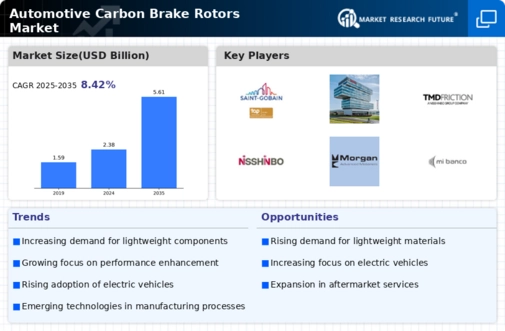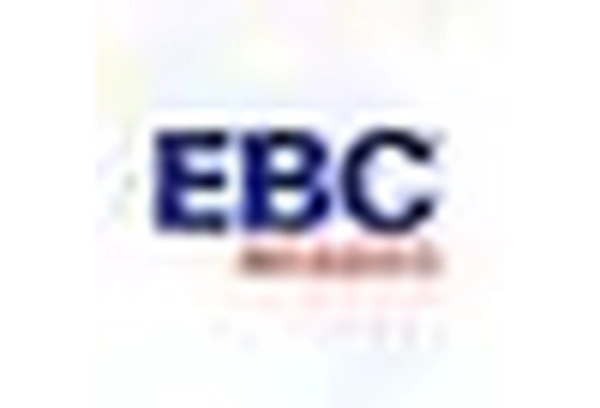Increased Adoption of Electric Vehicles
The Automotive Carbon Brake Rotors Market is poised for growth due to the increased adoption of electric vehicles (EVs). As EVs gain popularity, manufacturers are seeking advanced braking solutions that can handle the unique demands of electric drivetrains. Carbon brake rotors are particularly appealing for EVs due to their lightweight properties and ability to withstand high temperatures, which can enhance overall vehicle efficiency. The market for carbon brake rotors is projected to expand as more automakers integrate these components into their EV models, potentially increasing market share by 15% in the next few years. This trend reflects a broader shift towards innovative materials in the automotive sector.
Growing Awareness of Environmental Impact
The Automotive Carbon Brake Rotors Market is witnessing a shift driven by growing awareness of environmental impacts associated with traditional braking systems. Carbon brake rotors are often perceived as a more sustainable alternative due to their longer lifespan and reduced dust emissions compared to conventional materials. As consumers become more environmentally conscious, the demand for eco-friendly automotive components is increasing. This trend is particularly relevant in regions where sustainability initiatives are gaining traction. The market for carbon brake rotors is likely to benefit from this shift, as manufacturers respond to consumer preferences for greener products, potentially leading to a 10% increase in market penetration over the next few years.
Technological Advancements in Manufacturing
The Automotive Carbon Brake Rotors Market is experiencing a surge in technological advancements that enhance the manufacturing processes of carbon brake rotors. Innovations such as automated production lines and advanced composite materials are streamlining production, thereby reducing costs and improving product quality. These advancements not only increase efficiency but also allow manufacturers to meet the growing demand for high-performance braking systems. As a result, the market is projected to grow at a compound annual growth rate of approximately 8% over the next five years. This growth is indicative of the industry's shift towards more sophisticated manufacturing techniques that cater to both performance and safety requirements.
Regulatory Push for Enhanced Safety Standards
The Automotive Carbon Brake Rotors Market is also driven by a regulatory push for enhanced safety standards in the automotive sector. Governments worldwide are implementing stricter regulations regarding vehicle safety, which includes the performance of braking systems. Carbon brake rotors, known for their superior performance and reliability, are increasingly being recognized as a solution to meet these regulatory requirements. As manufacturers strive to comply with these standards, the demand for high-quality carbon brake rotors is likely to rise. This regulatory environment is expected to foster innovation and investment in the development of advanced braking technologies, further propelling market growth.
Rising Performance Standards in Automotive Sector
The Automotive Carbon Brake Rotors Market is significantly influenced by the rising performance standards set by automotive manufacturers. As vehicles become more powerful and capable, the demand for high-performance braking systems has escalated. Carbon brake rotors offer superior heat dissipation and reduced weight, which are critical for high-performance vehicles. This trend is particularly evident in the sports and luxury car segments, where manufacturers are increasingly adopting carbon brake rotors to enhance vehicle performance. The market is expected to witness a steady increase in adoption rates, driven by the need for improved braking efficiency and safety in high-speed driving conditions.

















Leave a Comment